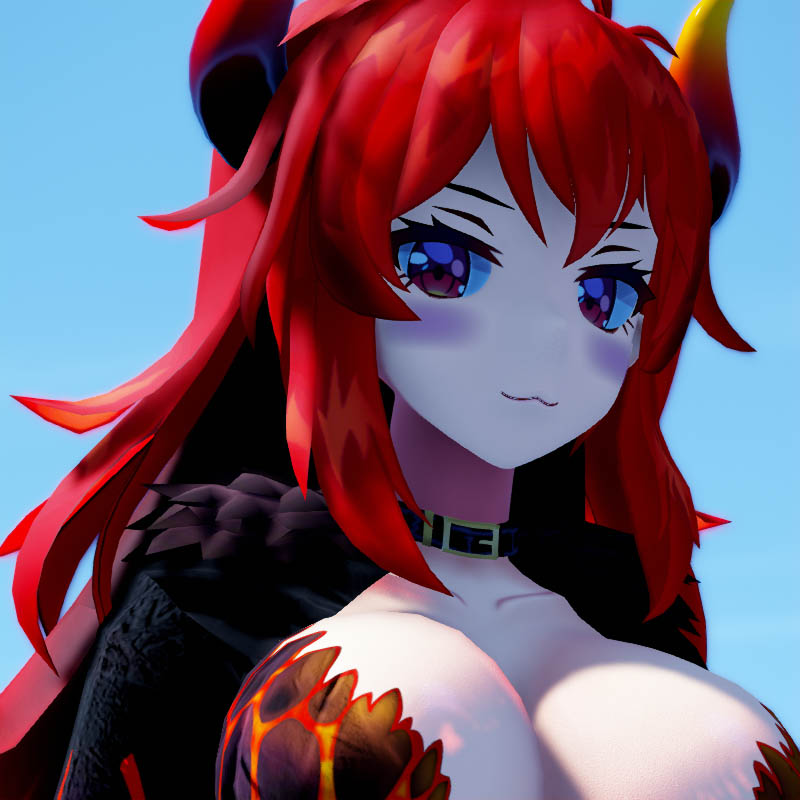
![]() MMD is a great vehicle for creating anime still imagery and videography. At its most basic level, you can load up one of the default models, apply a pose to it, may be add in a few MMEs and then create a render of the model. The fun part, however, is to make those models lifelike. I think it is fair argument that most people who are drawn to MMD are anime or manga fans. I don’t actually read manga, but I am a great anime fan and have been for a long time. One of the great things about anime is how appealing and credible they make their characters, even in totally fantastical settings. What this article will do is to introduce a basic method, one that I myself use, that allows you to quickly and easily create credible anime-like characters.
MMD is a great vehicle for creating anime still imagery and videography. At its most basic level, you can load up one of the default models, apply a pose to it, may be add in a few MMEs and then create a render of the model. The fun part, however, is to make those models lifelike. I think it is fair argument that most people who are drawn to MMD are anime or manga fans. I don’t actually read manga, but I am a great anime fan and have been for a long time. One of the great things about anime is how appealing and credible they make their characters, even in totally fantastical settings. What this article will do is to introduce a basic method, one that I myself use, that allows you to quickly and easily create credible anime-like characters.
How to create credible characters for your projects.
A method to the madness
Anime characters are rarely truly original, rather they tend to be stereotypes cobbled together from a suite of “accepted” traits. So for example, when you see a twin-tail anime girl character, she is often depicted as being petite and a tsundere, often with a violent trait. Or you have the “classic Japanese” maiden, with outwardly proper behavior, long straight dark hair and often carrying a katana and garbed as a shrine maiden. So what I am saying here is that there seems to be a formula or system that anime creators draw from to create their characters. We don’t have to be privy to their database to be replicate this system for our own use and what we will do here is to describe to you the method that I use, and so far that method has been fairly successful in my own works.
The most common mistake
One of the things that I see a lot of kids do in their MMD comic work is to borrow directly from anime series. These resultant fan interpretations seem very flat. I am not faulting them for doing things this way, but it is very hard to reproduce the character traits of a character developed by professional content creators. So my first argument is that you should try to get away from this method and outright develop original character interpretations of your own.
Anime characters from established franchises have behavioral traits that are very much set in stone by their animation studio creators; however, vocaloid characters have traits set by their fans. That means you as well, in case that isn’t obvious. So for example, Miku Hatsune started out as a character with a blank slate, with only a basic outline stipulated by her original creators, but over the years her character was fleshed out by her fan base; traits including her love for leeks. This is true of all the other vocaloids and their attendant characters such as Haku Yowane and Akita Neru.
The rest of this article will introduce my method on how to create essentially an original character and techniques to make him or her credible.
Step 1: Creating a character profile
Animation studios do this as work on characters are done by various parties; the best example of a character profile is a character reference sheet that illustrates the characters costume preferences, the way he or she needs to be drawn, his or her poses, unique characteristics and so forth. A character sheet or profile that we make for ourselves doesn’t have to be anywhere as complicated and in all honesty, I usually just do it in my head but it actually makes sense to put things down on “paper”. You can use GOOGLE KEEP to do something like this and here’s my suggestion on how to do this.
- Start a new KEEP note.
- Add a portrait of the character to the note – just do this with MMD. This helps with visualization.
- Add notes detailing your character’s key traits – keep this simple; one word or simple phrase for each trait works just fine.
- Any special notes.
For this article, I will be creating a character from scratch using the techniques discussed so that you can see the method in action. I just literally grabbed a random MMD model from my collection for the purpose. Her character sheet looks as shown below.

As you can see it is very basic but it outlines her character the way I want to define this character. I didn’t even bother to correct the grammar but do note that since I don’t own the design, I did include a link to her licensing terms so as to have a ready reference as to what I may or may not do with the model/character. But this is a relatively unknown character so she pretty much has a blank slate with which to work from.
Step 2: Fleshing out her character
Now, first off, her character sheet is not set in stone. This is only how I initially set her up so that I have something to work with. I use single adjectives and short phrases to outline her characteristics and it is done this way primarily as mental notes; but as I flesh her out many things might change. It is all part of a process that will be used to bring her to “life”. Somethings will work, other traits may need to be added and somethings may have to be taken out. We just don’t know until we actually “meet” her; so without further ado, let’s just do that.
The way I bring characters to life is by writing down a dialogue. You can actually do this in your head but that doesn’t work for our purposes here. The main point is that you want to “hear” them speak for themselves.
- ME: Dora, introduce yourself to everyone.
- DORA: You forgot the magic word…
- ME: “please”
- DORA: Much better, MERCI!
- ME: Getting back on point, who are you exactly?
- DORA: PARDON? MOI? Je suis Dora, bien sûr!
- ME: In English, please.
- DORA: Why do you want to know anyway? Like have you never seen a dragon?
- ME: Actually, most people in the 21st Century have never seen a dragon.
- DORA: Well, you can see moi now, non? Oui? Et je suis belle.
- ME: OK, let’s make this simpler – what can you do? And keep to English please.
- DORA: Hmmm… sing, dance, fry pancakes and throw “boules de feu”.
Step 3: Allow her character the freedom to develop
This can go on for quite awhile but the main purpose is to create a mental dialogue with the character to test out what works and what doesn’t. But the process is dynamic and as you proceed, the character’s trait will solidify to a point where it will become usable. But even in the short initial exchange above, we can begin to have a better knowledge of her and her creative potentials. By “creative potentials”, what I am referring to is what we can apply her to in terms of what we can do with her using MMD. She begins to evolve actual traits that we can use to pose her and bring her to life.
- DORA: Now I’m hungry. What are we having for lunch?
- ME: Leftovers; just open the fridge to see what’s in there.
- DORA: Hmmm… all you have is EGG SALAD?
- ME: Just add some spinach to it and that will be lunch.
- DORA: NON!
- ME: What do you mean by “NON!?”
- DORA: WHERE’S THE MEAT?
- ME: I usually have salad for lunch, so there’s no meat until dinner. But there is a can of spam opened in the meat drawer.
- DORA: SPAM? No one eats spam; at least not since WW2! I am so not eating some leftover from WW2!!!
- ME: It isn’t leftover from WW2. I bought it last week.
- DORA: Just because you bought it last week doesn’t mean that it doesn’t date back to WW2!!!
- ME: Then eat the egg salad.
- DORA: Do you know how fattening that egg salad is? A “lady” has to watch her calorie intake!
- ME: You’re a dragon right? So you got to have a high caloric intake; just so you can, for example, throw around your “boules de feu”?
- DORA: If you’re even suggesting that I am “en surpoids”; I’ll throw a “boules de feu” at you right now!
- ME: We’re living in the hills here surrounded by trees and in California; so don’t you be throwing “boules de feu” around young lady…
- DORA: I WANT MEAT!!!
- ME: Eat the spam…
- DORA: CULTURED LADIES DON’T EAT SPAM!!!
- ME: Cultured ladies don’t speak in “ALL CAPS” either.
- DORA: … oh … hmmmpfh!!!
As you can see, you can have a lot of fun with these “internal” dialogues and they really do help to bring the characters to life. Plus, the way I do it, I just let my imagination run free and the characters very quickly begin to be able to speak for themselves. Honestly, even as I typed out the dialogues above, I had no idea what Dora wanted to say in the first place. Her character traits helped significantly to determine the final outcome. Plus, the fact that she mixes in French into her sentences just evolved, it wasn’t even originally in her character profile.
Step 4: Visualization
Right, now that we have at least a crude outline of how she behaves, we can begin to do some productive work with her MMD, but before we do that, let’s take slight detour to introduce some important concepts. Take a look at the painting below. This is a classic portrait dating back a couple of centuries of a girl. We don’t know who she is or anything about her, but we can draw at least some ideas from her portrait. But for our purposes here, the results of our analysis is unimportant. What is important is that when we do look at people, we make judgement calls. This is simply how our minds work, we look at people in real life or in photos or paintings and categorize them.

When we create our initial visualizations of Dora, we will leverage the fact that whoever is going to look at her imagery is going to go through the same thought process. You might argue that Dora is just an anime style character with no equivalent in real life; but my counter argument is that, that is irrelevant as our minds don’t work that way. Dora is human-like, we will mentally identify with her as such.
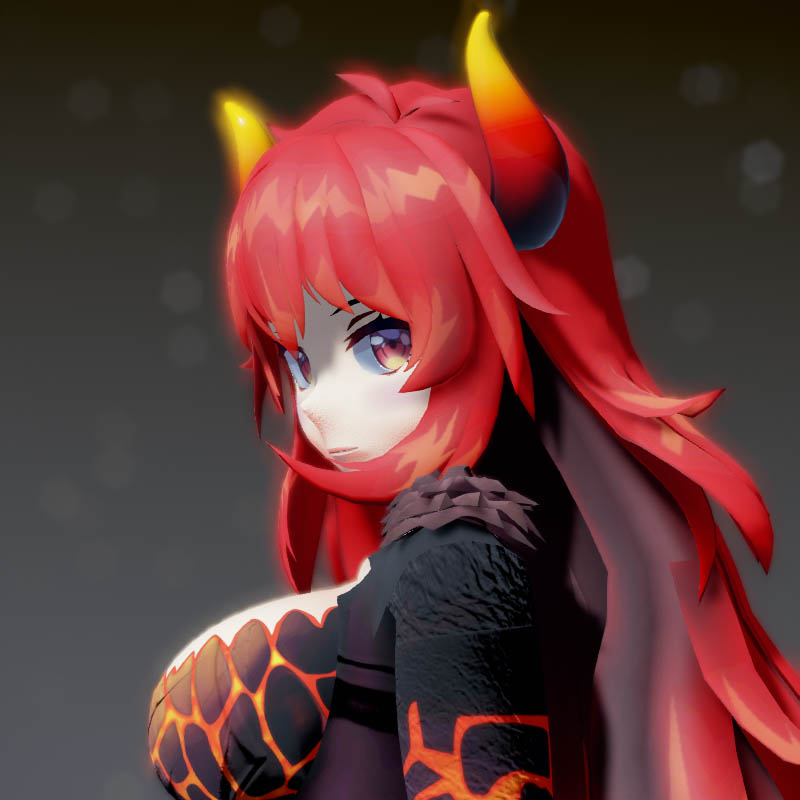
For illustrative purposes, I posed Dora in a manner similar to the girl in the painting above. It is not exactly the same pose and that’s is because at least partly, Dora’s given personality traits are different. Both Dora and the girl in the painting are looking back at the viewer but they give off very different auras. Wherein the girl in the painting is a little shy and unsure of herself, Dora extrudes a different impression: she has a certain level of pride and perhaps arrogance about her that better suits a “dragon lady”. At least in the way that I have chosen to interpret Dora’s character based on the character profile I create for her.
The key takeaway here is that once you have developed your character’s behavioral traits, it makes it much easier to create credible imagery of her that extrudes those personality traits that you set for the character. The Dora model is no longer some random MMD model, but one that has distinctive characteristics that you can convey through imagery made of with the model of her in MMD. In other words, she is now able to command “presence“.
Step 5: Putting her into context
Even for someone who was not privy to her character profile, which in most of our MMD work, which will be the case, it is important to embed Dora’s profile within imagery made of her. If you have a fairly clear idea of her personality traits in your own mind, this actually becomes an almost automatic process. It is totally intuitive, or should be. When I first started making pictures in MMD, the imagery were very dull. But once started writing short stories to back up my pictures, I quickly realized that the whole key to making credible pictures was to do exactly what I am explaining here. Give the model character a set of personality traits but just as important, give them a context. Once again, let’s use a classic art example to illustrate the point.
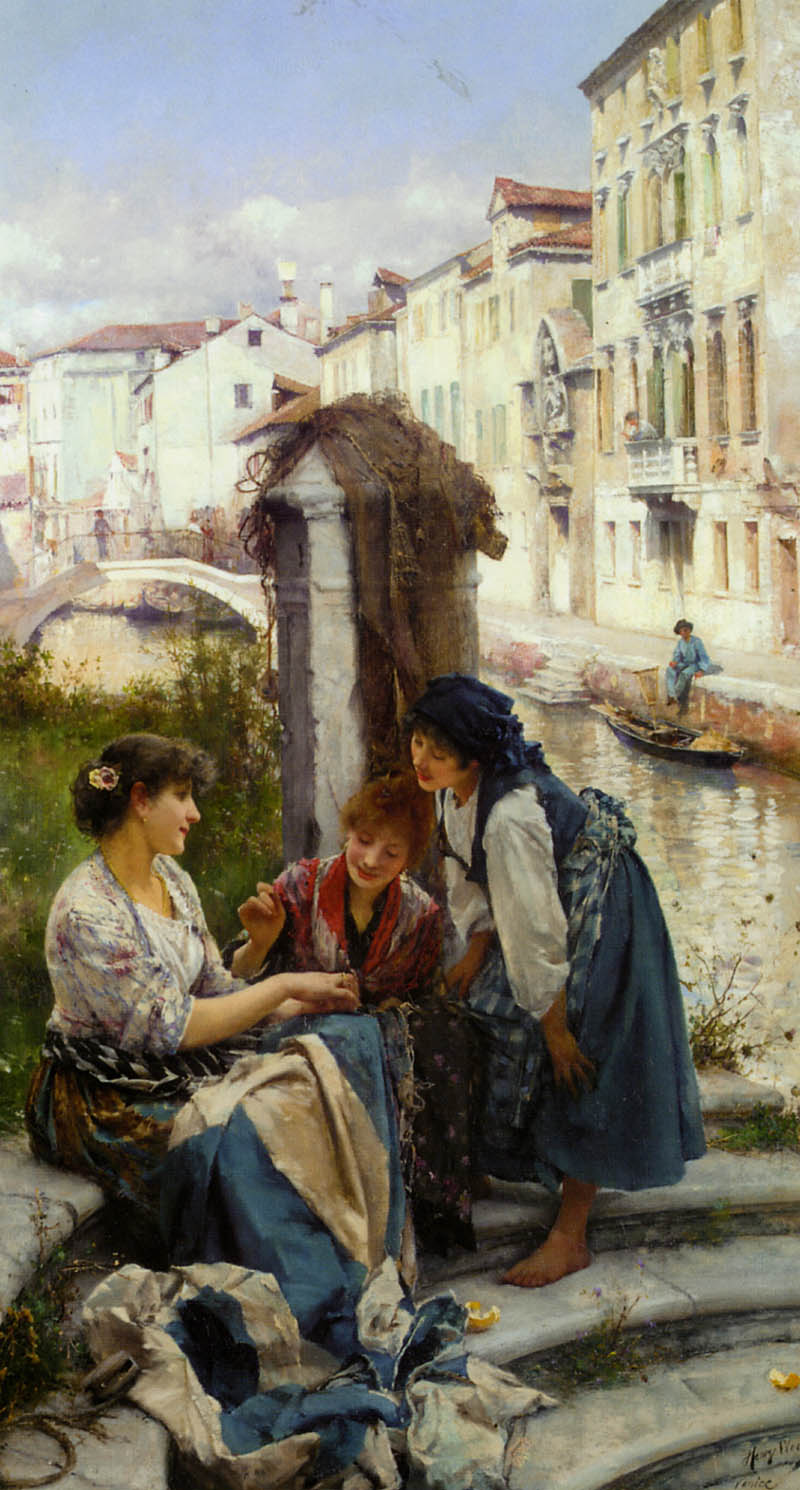
The painting above shows three women, in some village or town, most likely in Italy. The painting is titled “La Promessa Sposa” which translates into “The Bride Promise”, so presumably the woman to the left is the one discussing something to do with her pending marriage with two friends. The important thing is that in a single image, a lot of information is being conveyed but quickly identifies as to who, where and when the scene takes place. Scenes create context and this fact is something that we can leverage to advantage in making our characters more believable using MMD.
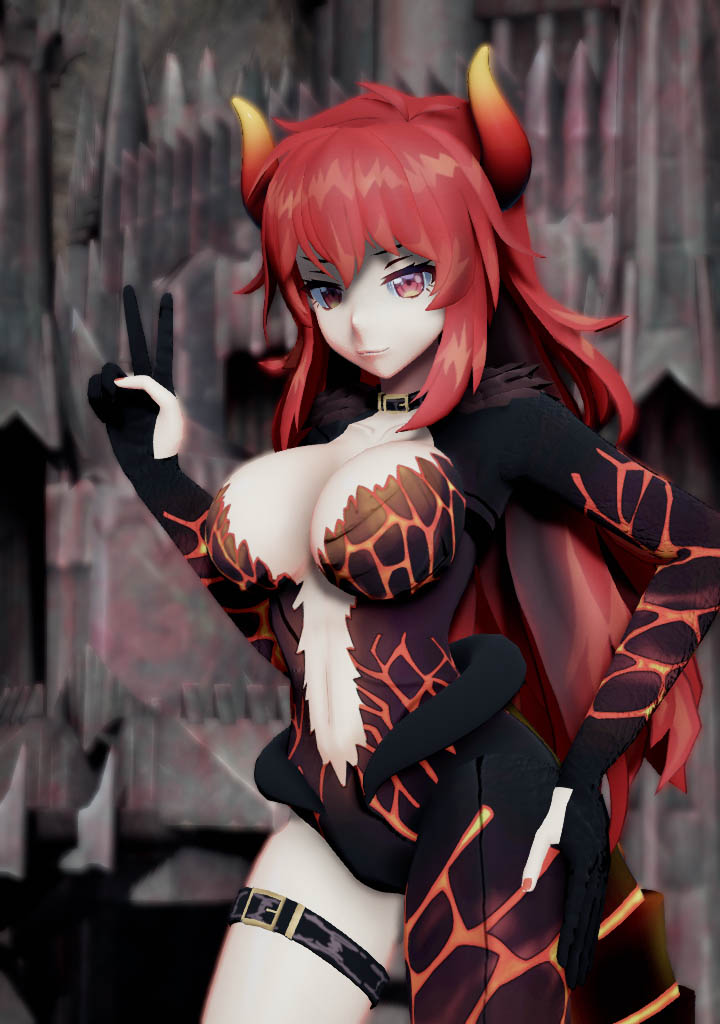
Step 6: Allowing her to stand on her own
I cobbled the image above very quickly, simply putting the Dora model on to the Mordor stage by Montecore. I did tweak the lighting and Ray-MMD settings to best suit her costume and character colors to help blend everything together, which is always a good thing to do. Her posing, still relies heavily on her character profile; she’s shown here being self-confident and a little arrogant as befitting a “dragon lady”. These are all characteristics outlined in the character profile that I created for her. But once again, I am working under the assumption that the average viewer has no access to her character profile, so whatever I do with her, these have to be intrinsic in her demeanor. Partially this is done with her stance but just as importantly, this is conveyed via careful manipulation of her facial expression.
She should come over as a fantasy character who is not shy and brazen to a degree. There are enough symbolism in the overall composition to quickly establish who she is, what she is, and where she is. She is not an entity in a void but has a context of her own and like in the painting above, the viewer is invited to look more deeply at the image to draw more conclusions about her themselves. This works the same as the way how the three women in the painting are presented; just a casual glance at them will identify each one as having very different personalities. Each one has there own “life story” which open to the mind of the viewer to further explore.
A blueprint to imitate life
One of the tenets of Japanese Shinto-Buddhist belief is that inanimate objects, such as dolls, can acquire a spirit. When I first heard this argument raised about MMD models by Japanese MMDers I was very skeptical, to put it mildly. But having given more thought and through utilizing the method outlined above, it actually makes a lot of sense.
I found when I put aside my Western beliefs and began to embrace these ideas, it actually made working with MMD models a lot easier. Literally, once I have defined their personalities, the characters will tell me how to use them, how to pose them, and how they will speak or move. And although the process is fairly uniform, the outcome is not. Each character quickly develops a personality of their own, and even when used within a group, each one can shine as an individual in their own right.
But just as we can change through life, so can the personality traits that we give our characters. The more astute reader might have been able to see this process at work here. Dora’s character profile as I first jotted it down, has developed right through this entire discussion. So if I was to rewrite her profile, some things would need to be added and others removed. This is a good thing, it makes Dora much more credible because, at least in some ways, she is more like us; constantly evolving due to life circumstances.
As always, thanks for reading and we hope that you found this article useful.
CREDITS
- Dora model download: 3d.nicovideo.jp/works/td36879
- Mordor model by Montecore
- Toyokura West model by SkyblueP
- Ray-MMD
- MMD 9.31
Note: I actually did do some research into Dora’s bio as described in her wikia entry after I created her character profile for this article. The interesting thing is that her love of “MEAT” is something that was a common characteristic plus the obvious fact that she is not human. Personality-wise, my character profile for her is very similar to how the Japanese wikia entry is suggesting that her character is suppose to be like. Lesson here is that you can generally get a good idea from the design of a character/model as to what his/her baseline characteristics would be like.
– SEE BELOW for MORE MMD TUTORIALS…
— — —
– _ — –

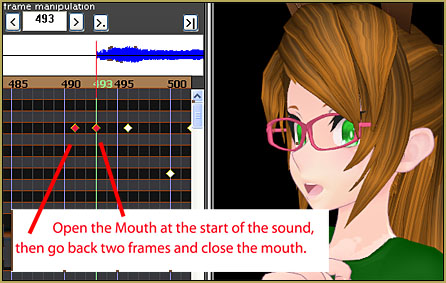



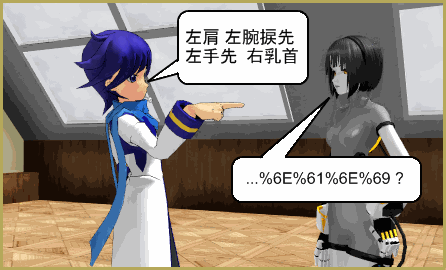

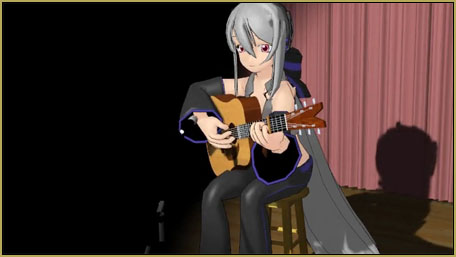
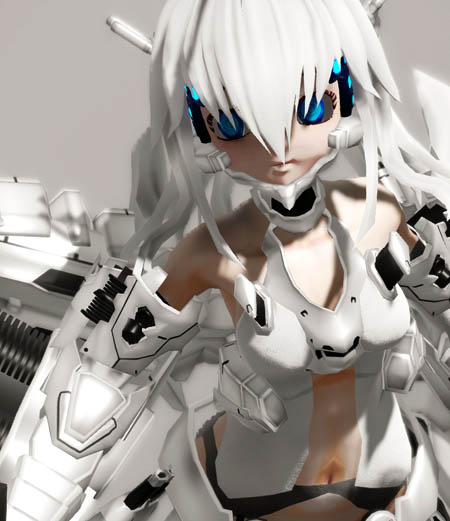

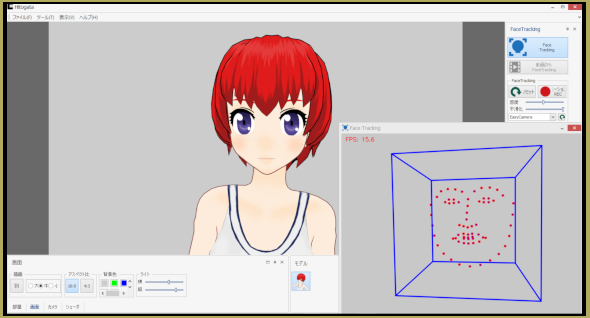
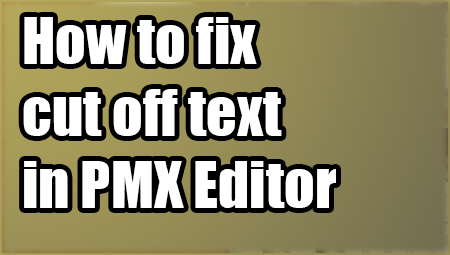
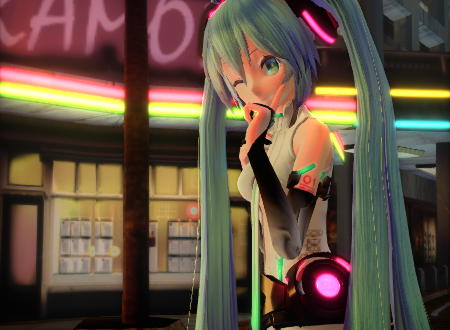

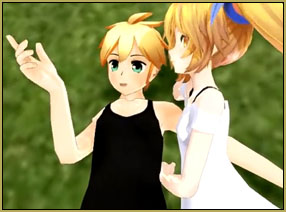
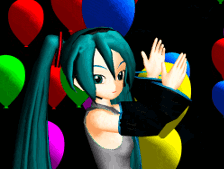
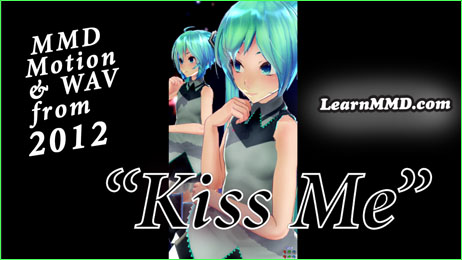
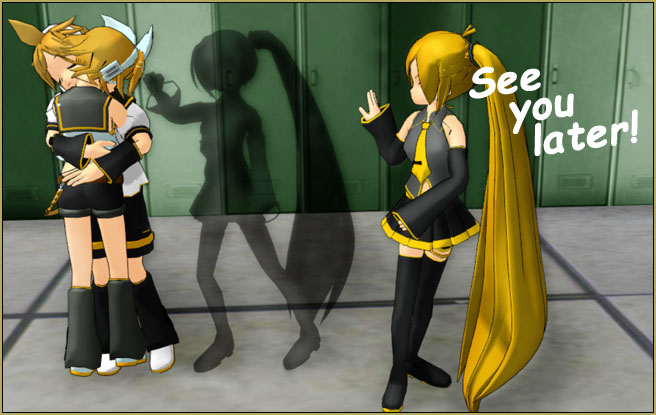


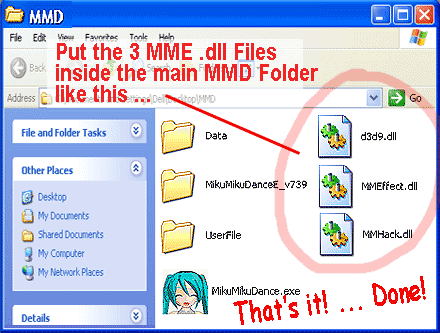

Am still stuck??
Still stuck??
— Reggie
For a second I thought the title said “edible”.
lol